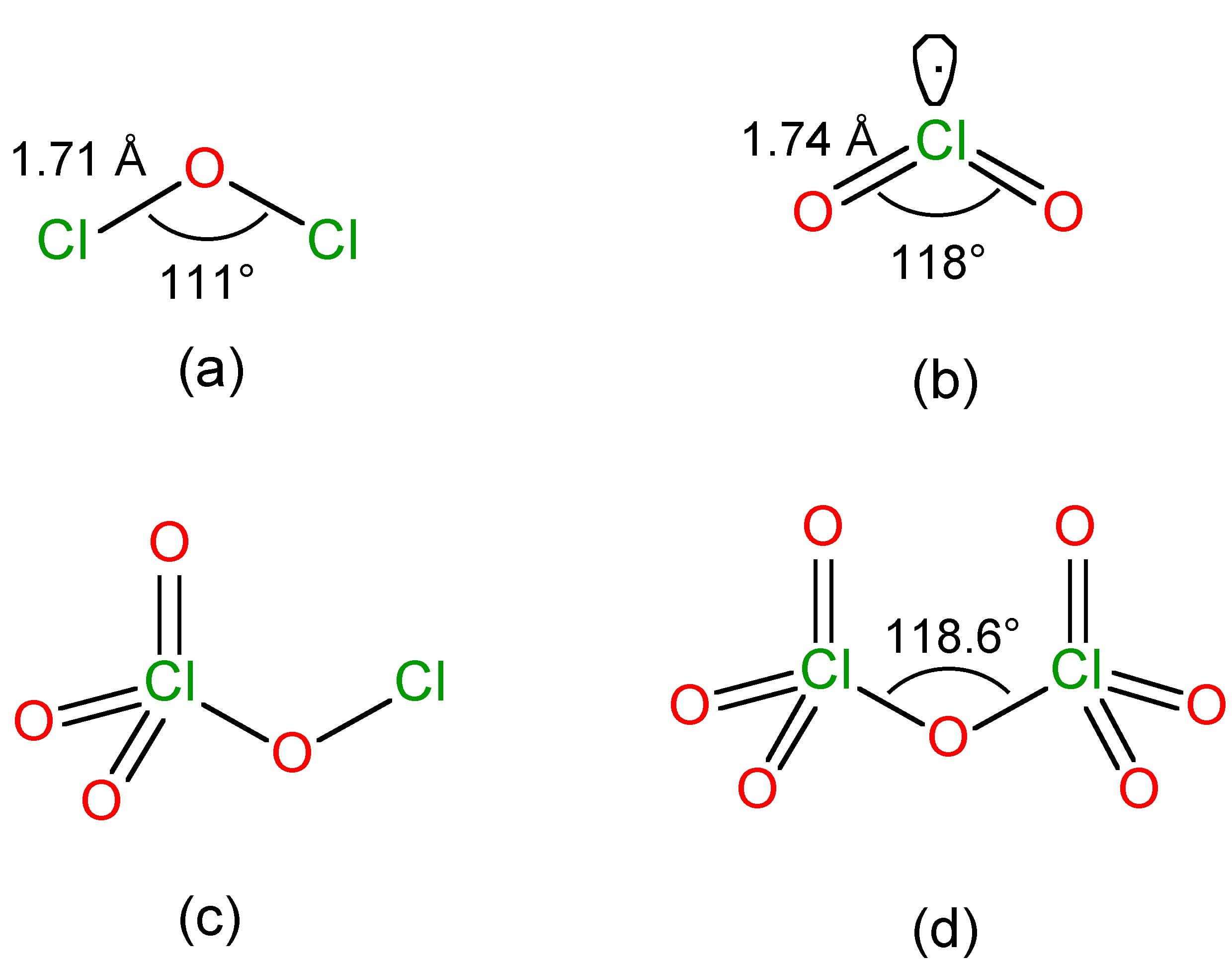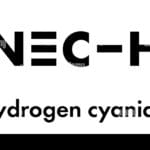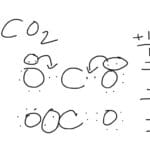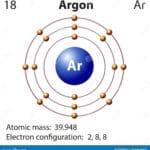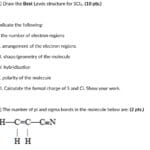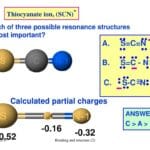Hydrogen cyanide (HCN), despite its simple formula, possesses powerful effects ranging from toxicity to industrial applications. These effects are intrinsically linked to its unique structure. This instructional guide will walk you through drawing the Lewis dot structure of HCN, exploring core chemical bonding concepts and their real-world implications. Let’s delve into the fascinating world of HCN, one electron at a time!
Crack the Code: Building the HCN Lewis Structure
Understanding the Lewis dot structure of HCN unveils much about its behavior and interactions. We’ll break down the process step-by-step for easy comprehension.
1. Electron Inventory: Counting Valence Electrons
First, we count the valence electrons—outer electrons participating in bonding—for each atom. Hydrogen (H) contributes one, carbon (C) contributes four, and nitrogen (N) contributes five. In total, we have ten valence electrons to work with.
2. Atom Placement: Carbon Takes Center Stage
Next, we arrange the atoms. Carbon, capable of forming the most bonds, typically occupies the central position. Hydrogen and nitrogen will bond with the central carbon atom.
3. Bond Construction: Single and Triple Bonds
Now, let’s connect the atoms! We begin with a single bond between carbon and hydrogen, using two of our ten electrons. This leaves eight electrons. To achieve a stable electron configuration for each atom (following the octet rule, except for Hydrogen’s duet), we form a triple bond between carbon and nitrogen, using the remaining six electrons. A triple bond represents three pairs of shared electrons.
4. Lone Pairs: Nitrogen’s Exclusive Electrons
While all ten electrons are used, nitrogen has two extra electrons not involved in bonding. These form a lone pair, exclusively belonging to the nitrogen atom.
5. Visualizing the Structure: The Completed HCN Lewis Dot Structure
The final HCN Lewis dot structure appears as:
H-C≡N:
Each atom satisfies its bonding requirements, with full outer electron shells. Nitrogen’s lone pair is depicted as two dots.
6. Molecular Shape: Linear Geometry
The Lewis structure also suggests the molecule’s shape. HCN adopts a linear shape, with all atoms arranged in a straight line. This linear geometry is critical to its properties.
7. Polarity: Unequal Electron Sharing
HCN is a polar molecule. Nitrogen is more electronegative than carbon, pulling the shared electrons in the triple bond closer. Similarly, carbon is more electronegative than hydrogen. This unequal electron distribution creates a dipole moment, resulting in a molecule with a slightly negative end (near nitrogen) and a slightly positive end (near hydrogen).
8. Formal Charges: Assessing Stability
To confirm stability, we can calculate formal charges. For HCN, each atom exhibits a formal charge of zero, suggesting a stable and plausible structure.
9. Real-World Significance: Beyond the Diagram
The HCN Lewis dot structure has significant real-world implications. HCN (hydrogen cyanide) is highly toxic, binding strongly to crucial enzymes and disrupting cellular processes. Conversely, it also finds some industrial applications as an intermediate in the synthesis of certain polymers. Its toxicity and reactivity are directly tied to its structure.
10. Comparison with Similar Molecules: Structural Variations and their Impacts
Let’s compare HCN’s structure with similar molecules:
| Molecule | Lewis Structure | Geometry | Polarity |
|---|---|---|---|
| HCN | H-C≡N: | Linear | Polar |
| CO | C≡O | Linear | Polar |
| N₂ | N≡N | Linear | Nonpolar |
| CH₄ | Tetrahedral Structure | Tetrahedral | Nonpolar |
Minor structural changes significantly impact molecular properties.
In conclusion, mastering the HCN Lewis dot structure transcends simple drawing; it’s about grasping fundamental principles of bonding, geometry, and polarity—influencing the molecule’s behavior and applications. This understanding provides a strong foundation for exploring chemical reactivity and molecular properties.
What is the Lewis dot structure for HCN?
Let’s determine how to draw the Lewis structure for hydrogen cyanide (HCN). It’s like building a molecule using electrons as building blocks.
Building the HCN Lewis Structure: A Step-by-Step Approach
Electron Counting: Hydrogen (H) has one valence electron, carbon (C) has four, and nitrogen (N) has five. Therefore, we have ten valence electrons.
Central Atom Selection: Carbon (C) is typically the central atom due to its ability to form multiple bonds.
Atom Connection: A single bond connects hydrogen to carbon (using two electrons), leaving eight electrons. A triple bond connects carbon to nitrogen (using six electrons).
Electron Distribution: The remaining two electrons form a lone pair on the nitrogen atom. The structure is H-C≡N:.
Understanding Bonds: Hybridization and Beyond
The C-H bond is a sigma (σ) bond, and the C-N bond involves one σ bond and two pi (π) bonds. Carbon and nitrogen exhibit sp hybridization, crucial for the linear structure. Some experts believe this hybridization is central to understanding the molecule’s high reactivity. Ongoing research continually refines our understanding of this complex interaction.
HCN’s Shape: Linear Geometry and Polarity
Sp hybridization results in a linear structure with a 180° bond angle. Nitrogen’s higher electronegativity creates a dipole moment, making HCN a polar molecule. There is ongoing debate about the exact magnitude of this dipole moment under various conditions.
Here’s a hybridization summary:
| Atom | Hybridization | Bond Type |
|---|---|---|
| Carbon (C) | sp | 1 σ (to H), 1 σ, 2 π (to N) |
| Nitrogen (N) | sp | 1 σ, 2 π (to C) |
| Hydrogen (H) | s | 1 σ (to C) |
Visualizing HCN and its Real-World Implications
Visualize HCN as a linear molecule. This structure impacts its interactions. While industrially useful in certain syntheses, HCN’s toxicity, stemming from its strong ability to bind to crucial metabolic enzymes, needs to be handled with extreme caution.
Key Points Summary: The HCN Lewis Structure in a Nutshell
- HCN is linear.
- Carbon and nitrogen show sp hybridization.
- Electronegativity differences result in polarity.
- It features a strong C≡N triple bond.
- Its structure is key to its properties and applications.
It’s important to remember that the Lewis structure is a simplified representation of reality. Ongoing research continues to improve our molecular bonding understanding.
[https://www.lolaapp.com/hydrogen-cyanide-lewis-structure] [https://www.lolaapp.com/lewis-dot-for-hcn]
What is the structure of HCN?
Let’s explore hydrogen cyanide (HCN)’s structure, a simple yet impactful arrangement.
Building the HCN Structure Step-by-Step
We start by counting valence electrons: Hydrogen (1), Carbon (4), Nitrogen (5), totaling 10 electrons. Carbon, being less electronegative than nitrogen, is the likely central atom.
Step 1: Connecting Atoms
Hydrogen connects to carbon with a single bond (using 2 electrons).
Step 2: Forming the Triple Bond
Carbon and nitrogen connect via a triple bond (using 6 electrons).
Step 3: Adding Lone Pairs
The remaining 2 electrons form a lone pair on nitrogen.
Step 4: The Complete Structure
The finished structure is H-C≡N, satisfying the octet rule, creating a relatively stable molecule.
Hybridization and Bonding: Delving Deeper
Both carbon and nitrogen are sp hybridized. One s and one p orbital from each combine, forming two sp hybrid orbitals. This leaves two unhybridized p orbitals for bonding.
Bonding specifics:
- A sigma (σ) bond exists between hydrogen and carbon.
- A sigma (σ) bond connects carbon and nitrogen.
- Two pi (π) bonds exist between carbon and nitrogen, strengthening the triple bond.
Molecular Geometry: A Linear Arrangement
This bonding results in a linear arrangement (180° bond angle). This linear structure strongly influences HCN’s properties, especially its polarity.
Polarity: An Imbalance of Charges
HCN is polar due to nitrogen’s higher electronegativity, creating a partial negative charge (δ-) near nitrogen and partial positive charges (δ+) on hydrogen and carbon.
Uses and Dangers: A Dual Nature
HCN finds industrial use but is incredibly toxic. It inhibits cytochrome c oxidase, crucial for cellular respiration, leading to severe health issues. Caution and safety precautions are essential when handling HCN.
Key Points for HCN’s Structure
- HCN has a linear molecular geometry.
- It includes a strong carbon-nitrogen triple bond.
- Both carbon and nitrogen exhibit sp hybridization.
- The structure directly affects HCN’s polarity and reactivity.
- Its triple bond is central to its properties, including toxicity.
Research continues to refine our understanding of HCN.
[https://www.lolaapp.com/hydrogen-cyanide-lewis-structure] [https://www.lolaapp.com/lewis-dot-for-hcn]
Why is HCN a Triple Bond?
Let’s examine hydrogen cyanide (HCN) and its unique triple bond.
We start with valence electrons: Hydrogen (1), Carbon (4), Nitrogen (5), totaling 10 electrons. Carbon is likely the central atom.
Step 1: Connecting Atoms:
A single bond connects hydrogen to carbon (2 electrons used).
Step 2: Octet Rule:
Carbon and nitrogen require eight electrons each for stability (octet rule; Hydrogen needs two). To satisfy this, a triple bond forms between carbon and nitrogen (6 electrons used).
Step 3: The Triple Bond:
The resulting structure is H-C≡N, satisfying the octet rule.
Orbital Hybridization and Shape:
Both carbon and nitrogen undergo sp hybridization. This leads to a linear structure (180° bond angle). Some experts suggest this hybridization is crucial for many of HCN’s properties.
Triple Bond Significance:
The triple bond is crucial. Its strength contributes to HCN’s stability and reactivity. However, this strength also contributes to its toxicity by firmly binding to essential enzymes.
Real-World Applications (and Cautions!):
HCN has some industrial uses but is extremely poisonous. Always handle it with extreme caution.
In short: The triple bond satisfies all atoms’ electron requirements, leading to HCN’s unique properties, including its toxicity. Further research may reveal even more details about this molecule.
[https://www.lolaapp.com/hydrogen-cyanide-lewis-structure] [https://www.lolaapp.com/lewis-dot-for-hcn]
- Mastering Leader in Spanish: The Complete Guide - April 19, 2025
- Uncovering Surprising Parallels: England Size Compared to US States - April 19, 2025
- Old Mexico Map: Border Shifts 1821-1857 - April 19, 2025
